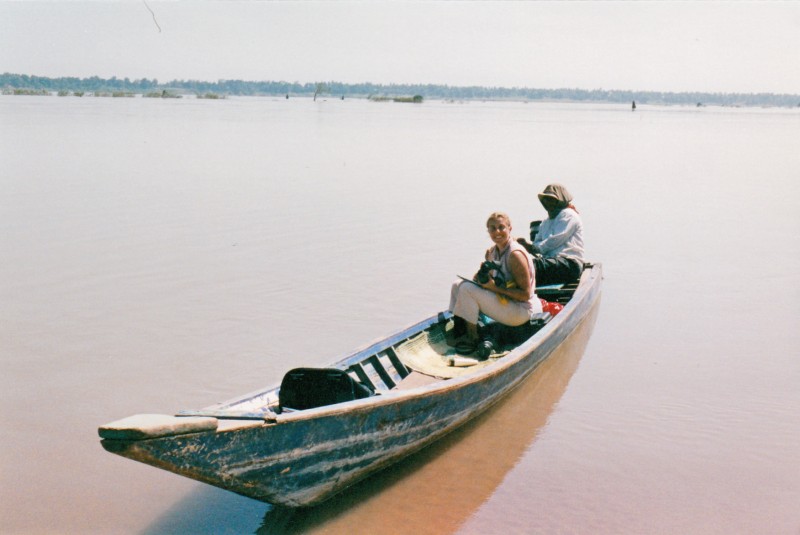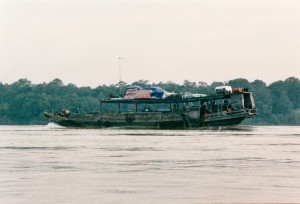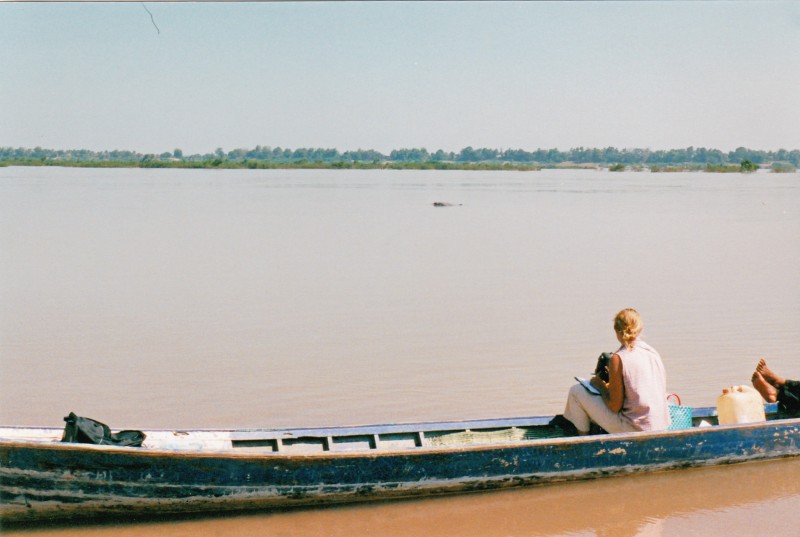[In January 2003 I accompanied an expedition that was conducting a survey of river dolphins on a stretch of the Mekong River in Cambodia. The expedition was led by Isabel Beasley, who was then a PhD student specializing on Orcaella brevirostris: also known as the ‘Irrawaddy Dolphin’ this species is found in many Asian river systems and deltas. The journal I kept during the expedition will appear on this site as a continuous series of posts. This is part 3 of the series.]
January 7, 2003
Out on the river: at 7 this morning we set off in a Fisheries department boat, to spend the day on the river. We made our way back to the spot we were at yesterday, near the pool at a place called Kampi (pronounced Gumpy) where the observation area is. The boat is small, without a hull or any kind of shelter. The boatman is a middle-aged Cambodian, an employee of the Fisheries Department.
We chugged along, quite close too the shore, which was line with boats of many different kinds – big junk like boats and small fishing boats.
They were like a floating village, and filled with people, some of them had little floating platforms on which they were growing vegetables – little gardens. It was cool at that time of morning, almost cold; it warmed up as we went along.
We’re at Kampi now – the river here is about 2 ½ miles wide and we are at midstream. Isabel is excited because we’ve just seen a calf (or possibly a juvenile) surfacing. She’s also spotted another animal she recognizes, because of its triangular dorsal fin. Triangular dorsal fins are apparently a great help in identifying the animals. In the 45 minutes or so that we’ve been here, we’ve seen some six to eight different animals surfacing. We’ve also spotted the calf, many times, and Isabel has the feeling that it’s very young and is accompanying its mother. This pair seems to be associated in some way with the dolphin with the triangular fin.



